4 April 2023
Christ on camera: Bringing the Easter story to life
Ivan Radford
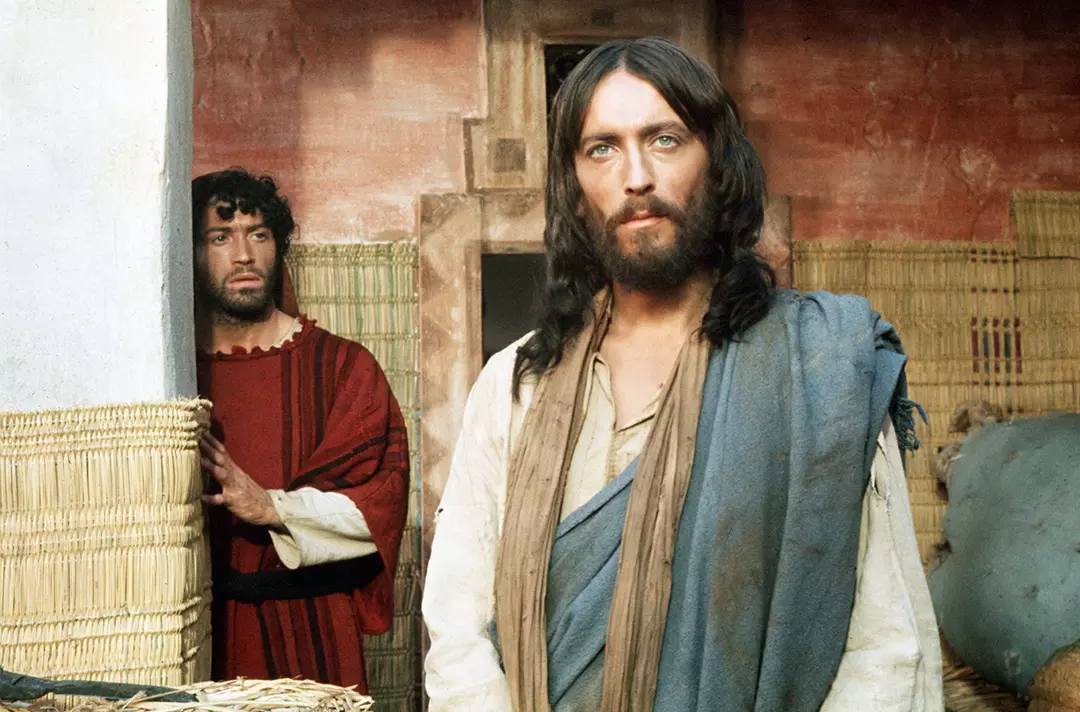
Ivan Radford explores portrayals of Jesus and the events of Easter on screen.
In today’s media-saturated age, many people will be journeying through Easter not just through prayer and devotions but also through film and TV. As long as cinema has existed, people have used it as a lens through which to spread the gospel or explore faith.
Within a couple of years of moving images being invented, the Lumière brothers in France told the story of The Passion in an 1898 short film. Five years later, a 44-minute silent film depicted the Life and Passion of Christ. Many other biblical films came in between and many more have followed – today, Jesus is one of the most depicted characters in film and TV history.
That feels apt in relation to Palm Sunday, a day of conflicting perspectives and perceptions. Jesus’ arrival at Jerusalem was triumphant yet humble. It paved the way for a bittersweet collision of expectations, as this prophesied Messiah would end up liberating his followers in a way they didn’t – and couldn’t – foresee. The journey from cries of ‘hosanna’ to ‘crucify him’ is rich with cinematic potential, even as the ways in which filmmakers have presented it opens up another maze of interpretations.
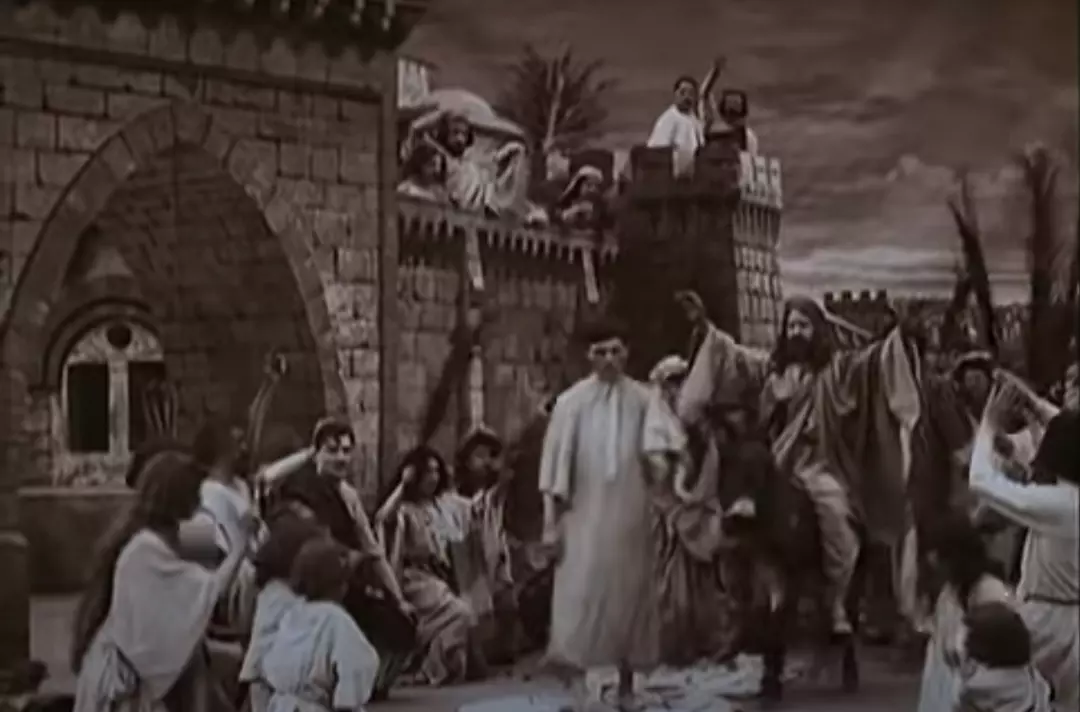
Divine awe
‘This is the story of Jesus of Nazareth,’ proclaims Cecil B DeMille’s 1927 silent film The King of Kings. ‘He himself commanded that his message be carried to the utter-most parts of the Earth. May this portrayal play a reverent part in that spirit of that great command.’
With quotes from the King James Version as title cards, the film strives to be faithful to Scripture. Some details are invented or embellished, and DeMille’s taste for the garish occasionally rears its head, but it’s largely a respectful effort, lighting Jesus in a way that recalls William Holman Hunt’s painting The Light of the World. The judicious use of stunning effects helps convey the awe of Jesus’ sacrifice.
Almost 40 years later, 1965’s The Greatest Story Ever Told gives us a different approach. ‘Can I get more awe?’ director George Stevens is supposed to have said to John Wayne, as the actor played the Roman centurion who realised who Jesus was. Wayne’s response, the legend goes, was to repeat the line with the requested addition: ‘Awww, truly this man was the Son of God.’
That anecdote isn’t true but it’s indicative of the accuracy elsewhere, as Stevens’ bloated biblical epic falls into the trappings of what by that point had become a whole movie genre. Based on a book by Fulton Oursler – leaning on John’s Gospel – its Jesus is a more mysterious figure. But despite Max von Sydow’s authoritative performance, Christ is lost in a sea of Hollywood cameos.
Borrowing from all four Gospels, 1961’s King of Kings similarly descends into cliché, while getting bogged down in a rebellion subplot. Its most interesting decision might be to stage the Last Supper at a Y-shaped table – a reminder, as it departs from Leonardo da Vinci-inspired tradition, of how much culture can shape the way we think of events.
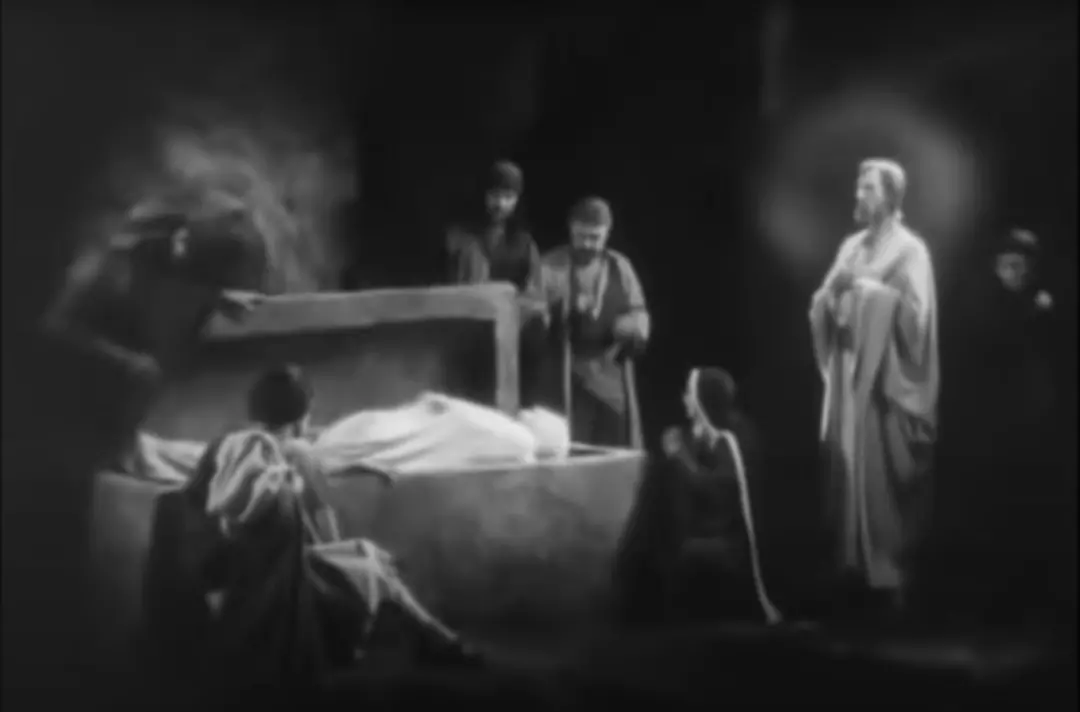
Human concerns
It’s so easy for us to become distracted by our own expectations of Jesus. Some of the most notorious screen portrayals of Christ are ones that perhaps tell us more about the people making them than the Son of God. Mel Gibson’s slow-motion-heavy The Passion of the Christ has helped some viewers grasp the weight of Jesus’ sacrifice, but it is driven to graphic extremes by its director’s own vision, and includes some questionable ideas. Meanwhile, Martin Scorsese admitted that he made the highly controversial The Last Temptation of Christ as a way for himself to try and get to know Jesus, and process his questioning doubts, rather than offer answers to others.
Pier Paolo Pasolini brought his political perspective to the acclaimed The Gospel According to St Matthew. One of the few films named as ‘important’ by the Vatican, it’s a notably more understated affair, thanks to its neorealist style – during the Crucifixion, the film focuses mainly on Jesus’ face, before cutting to a black screen and quoting Isaiah.
With dialogue taken from Matthew’s Gospel, the result is a film in which Jesus is primarily seen among the poor. He doesn’t say much and appears as a man of action. And yet what’s most striking is that, unlike other performances, he’s often seen smiling.
It’s a similar trait to Robert Powell’s turn in 1977’s miniseries Jesus of Nazareth. Given the extra screentime to go into Jesus’ story with depth, there’s an intimacy to Franco Zeffirelli’s production that makes Powell’s Jesus accessible and engaging – even as he brings an otherworldly quality simply by not blinking.
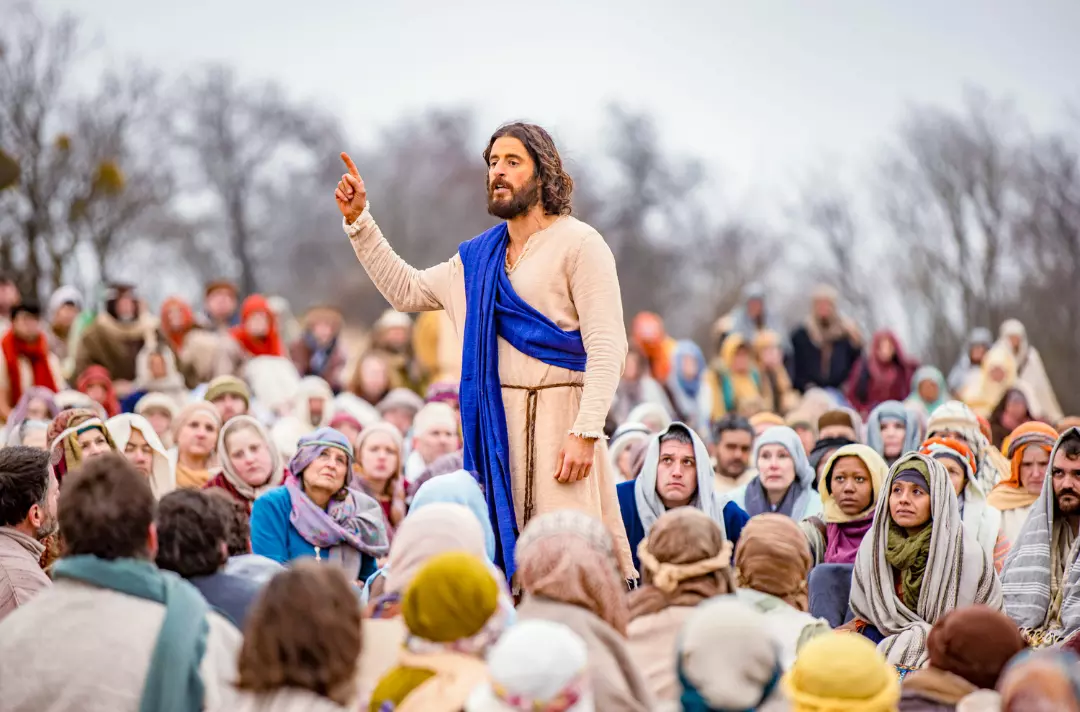
Evangelical potential
Jesus of Nazareth reportedly reached 21 million viewers in the UK and 91 million in the USA. That potential to engage new audiences was the inspiration behind 1979’s The Jesus Film – a Luke-based chronicle that has been the basis of successful outreach for churches, including Salvation Army corps. Today, the hit crowdfunded series The Chosen – filmed at The Salvation Army’s Camp Hoblitzelle in Texas – is doing something similar by making the Bible engaging to mainstream audiences in a binge-watching age. Three seasons into its planned seven-season run, episodes have been watched more than 400 million times and translated into 50 languages and counting.
The number of times that non-religious filmmakers have also been drawn to Bible stories may be telling. Kevin Reynolds’ 2016 drama Risen might actually benefit from an atheist’s perspective, as it imagines the unexpected and moving conversion of a Roman military tribune.
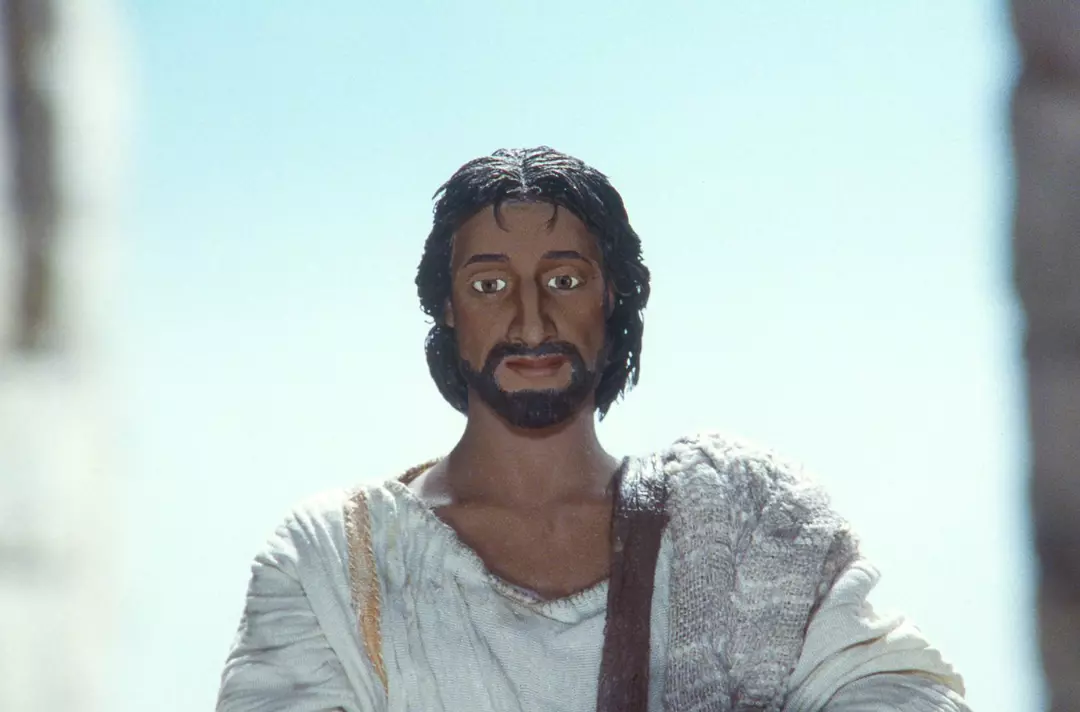
Who is this?
Of course, the Bible gives us no description of what Jesus looked like – a challenge for a visual medium where positioning the camera immediately enforces a perspective on events. In more recent years, films such as the animated The Miracle Maker have moved away from the image of a white man that has traditionally dominated Western depictions of Jesus.
From the serious to the speculative, all these portrayals are a reminder that no two people witness events in the same way. Everyone comes to Jesus asking uniquely for themselves, ‘Who is this?’ (Matthew 21:10). The most moving parts of so many films about Jesus are his encounters with other people, as we see how they are changed by him. It seems like no coincidence that almost all the films mentioned here choose to end with the objective truth of Jesus’ promise: ‘I am with you always’ (Matthew 28:20).
Director’s Notes
Questions to consider when watching a film based on the Bible:
- Which of the Gospels is it based on?
- Where does the film depart from Scripture?
- Why do you think it departs from Scripture?
- Is a dramatic rather than a literal interpretation helpful or not? Why?
- How is Jesus portrayed in this movie?
- How has the film affected your perception of Jesus?
Written by

Ivan Radford
Managing Editor
Discover more
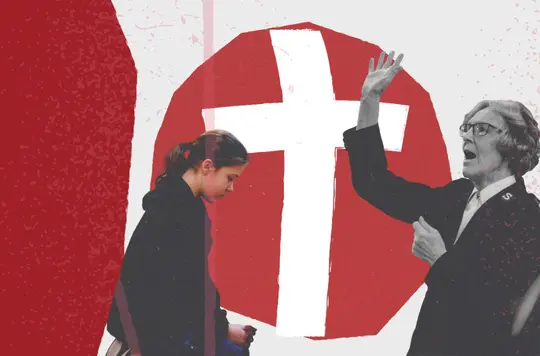
Lent and Easter
Devotions, articles and resources to help you journey through Lent and celebrate Easter.
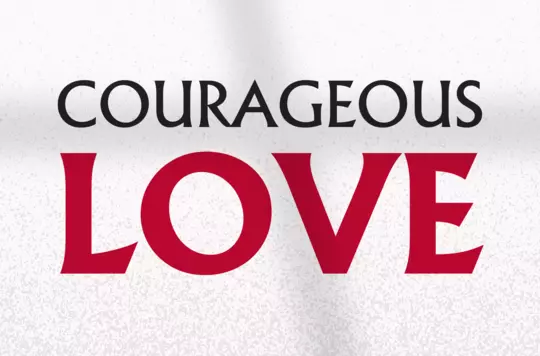
Easter Resources 2025
Resources to support intentional moments of reflection this Holy Week and inspire courageous love as we look to the love of Jesus this Good Friday and Easter Sunday.

Pilate and Jesus: How do we make our decisions?
Major Malcolm Martin considers the conflict of opinion about Jesus.

The General: 'It is finished'
An Easter message from our international leader General Brian Peddle.